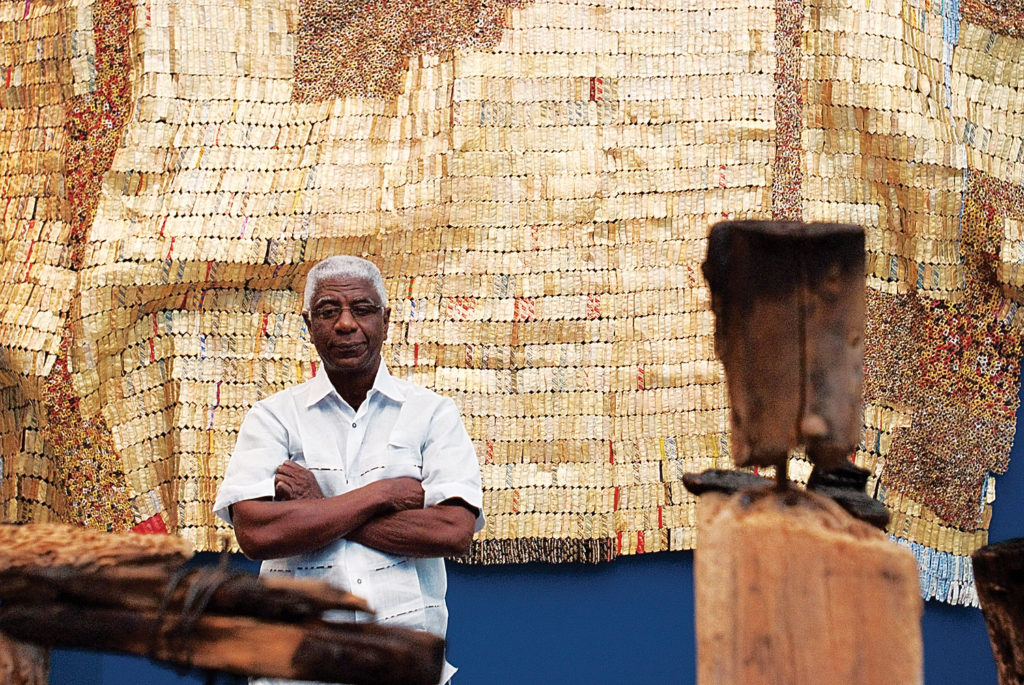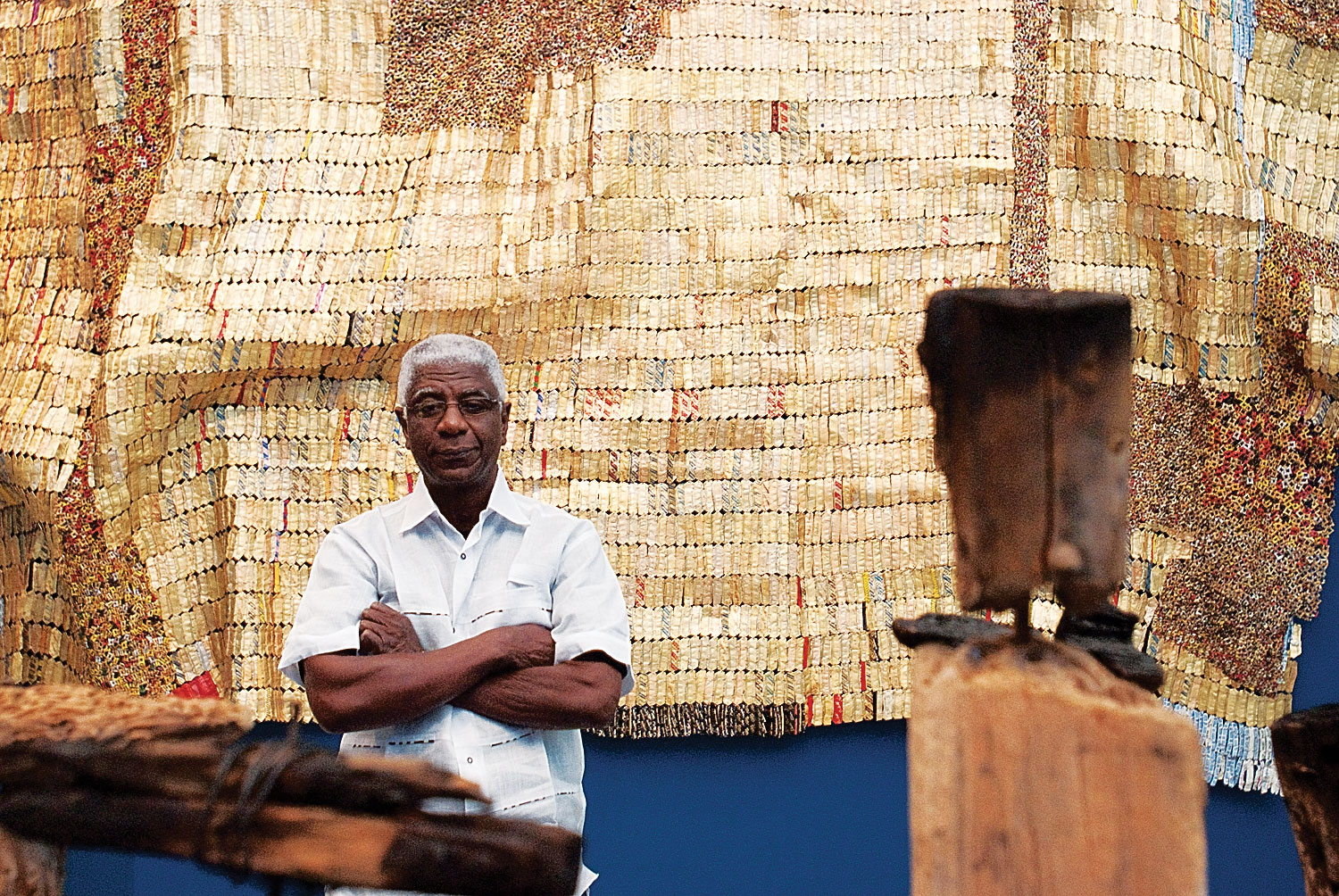Amanda Childs
Contributor

Though seeing strikingly modern art in the Royal Ontario Museum (ROM) may be odd, their new retrospective exhibit showcasing Ghanian artist El Anatsui is surprisingly great.
A graduate of Ghana’s University of Science and Technology and now a professor of sculpture at the University of Nigeria, Anatsui was asked to be a part of the ROM’s “Season of Africa” series after gaining acclaim in Europe. His exhibition, entitled “When I Last Wrote to You about Africa,” shows off the artist’s progress through his decades of creative work.
“When I Last Wrote to You about Africa” is not Anatsui’s first exhibition in Canada, or even Toronto – in 2009, he showcased his bottle-top tapestries in the Art Gallery of Ontario. His new exhibition at the ROM, however, is significant not only for showcasing Anatsui independently, but for showing him in relation to his heritage and progress as an artist over time. The exhibit includes Anatsui’s paintings, installations and wooden sculptures, as well as his bottle cap tapestries.
Anatsui’s tapestries are “so different from everything,” said Francisco Alvarez, managing director for the Institute of Contemporary Culture at the ROM. “[They’re] a luxurious beauty.”
The pieces are made from alcohol bottle caps that are flattened, twisted, scrunched or folded, and then sewn together using copper wire. These tapestries are one of the primary reasons for Anatsui’s growing fame – they are beautiful, unique and meaningful.
The bottle tops are also significant for their history: alcohol was brought to Africa by European settlers and used to negotiate with the native people living there. Using bottle caps in his artwork today allows Anatsui to honour and remember his nation’s history while creating new identities for his countrymen.
One of the most fascinating pieces in the exhibit is Straying Continents, a bottle cap tapestry commissioned by the ROM specifically for the exhibition, now on display at the very beginning of the museum’s Africa section. Straying Continents is dazzling to look at. The tapestry looks like a flattened map of the world: the land masses are made of closely sewn bottle caps while the oceans are made of folded caps netted together. The display is meant to change over time due to gravity and age.
Straying Continents will remain in the museum after “When I Last Wrote to You of Africa,” and is worth seeing even without the context of El Anatsui’s independent exhibit.
To get to the rest of “When I Last Wrote to You of Africa,” patrons walk past a timeline of Anatsui’s life and career mounted on the corridor walls, including photos from the artist’s private collection.
Here, Anatsui’s way of uniting the past to the present in his work shows through his use of the adrinkra, West African symbols used in weaving and pottery which were once reserved for royalty and religion. “Adrinkra” means “good-bye,” and is used by Anatsui to look at both the past and the future of his country.
Anatsui has “risen above the traditional African artist, but is still influenced by his African-ness,” said Alvarez, providing a perfect description of an artist who is blatantly, and wonderfully, African, but powerful in that his work is accessible to non-Africans as well. Anatsui’s influence can be seen in a mural display on the ROM’s first floor entitled Walls and Barriers: A Collaborative Project, an art project inspired by Anatsui that was the hard work of secondary students across the GTA. The work explores Anatsui’s fascination with walls and boundaries, which can be seen in his sculpture Crumbling Wall, just around the corner from the mural.
It’s strange when cultural-historical museums like the ROM choose to display art, especially when the artist himself is still living; however, incorporating Anatsui’s use of history to create innovative artwork is immensely successful at bringing attention to the ROM’s “Season of Africa” theme. Ultimately, the exhibit is well placed and wonderfully executed. Anatsui’s artwork honours Africa’s past while dreaming of a great future.
El Anatsui’s “When I Last Wrote to You of Africa” will be on display at the Royal Ontario Museum until Feb. 27, 2011.
Contemporary artist brings history and culture to the ROM


